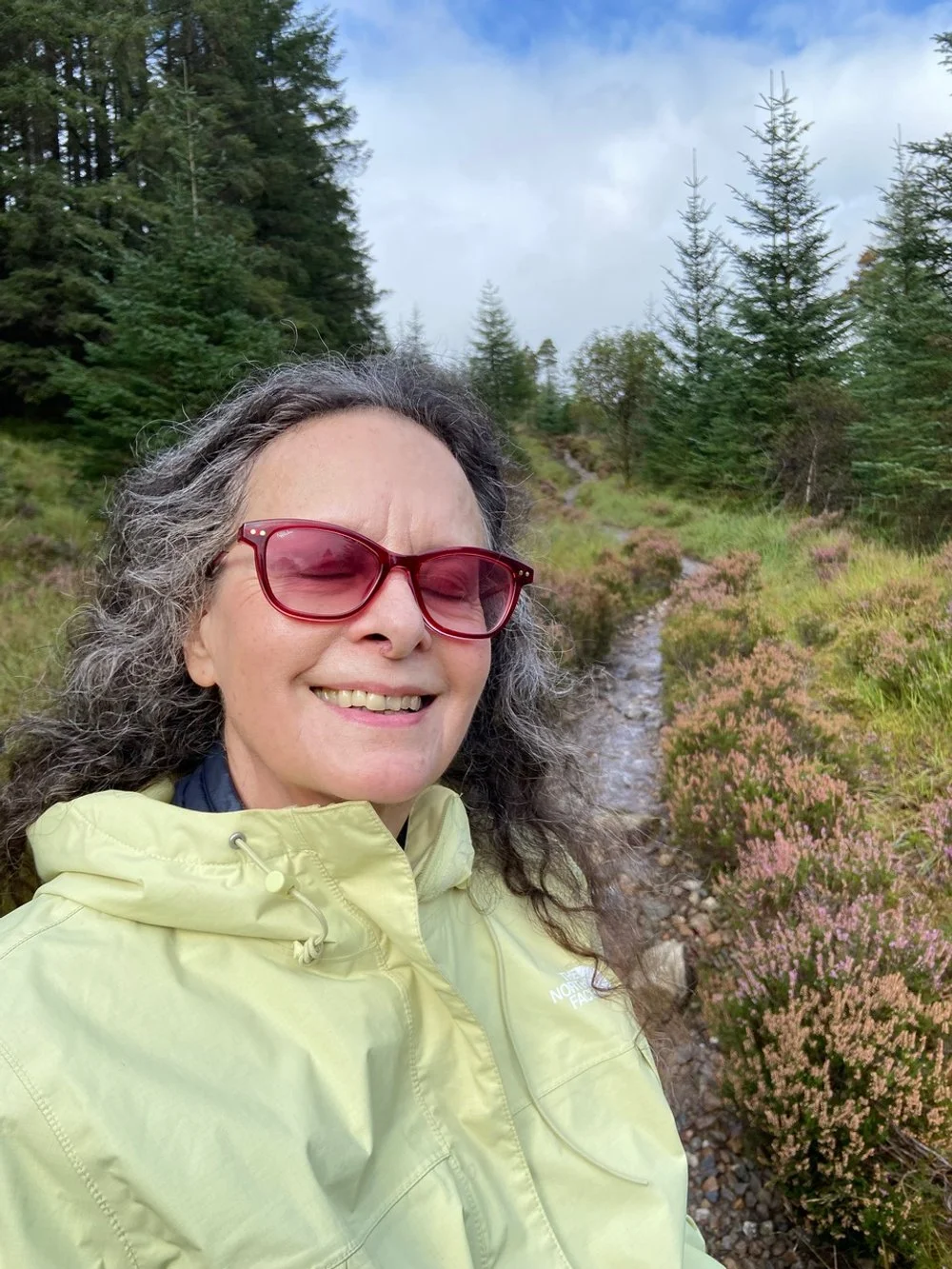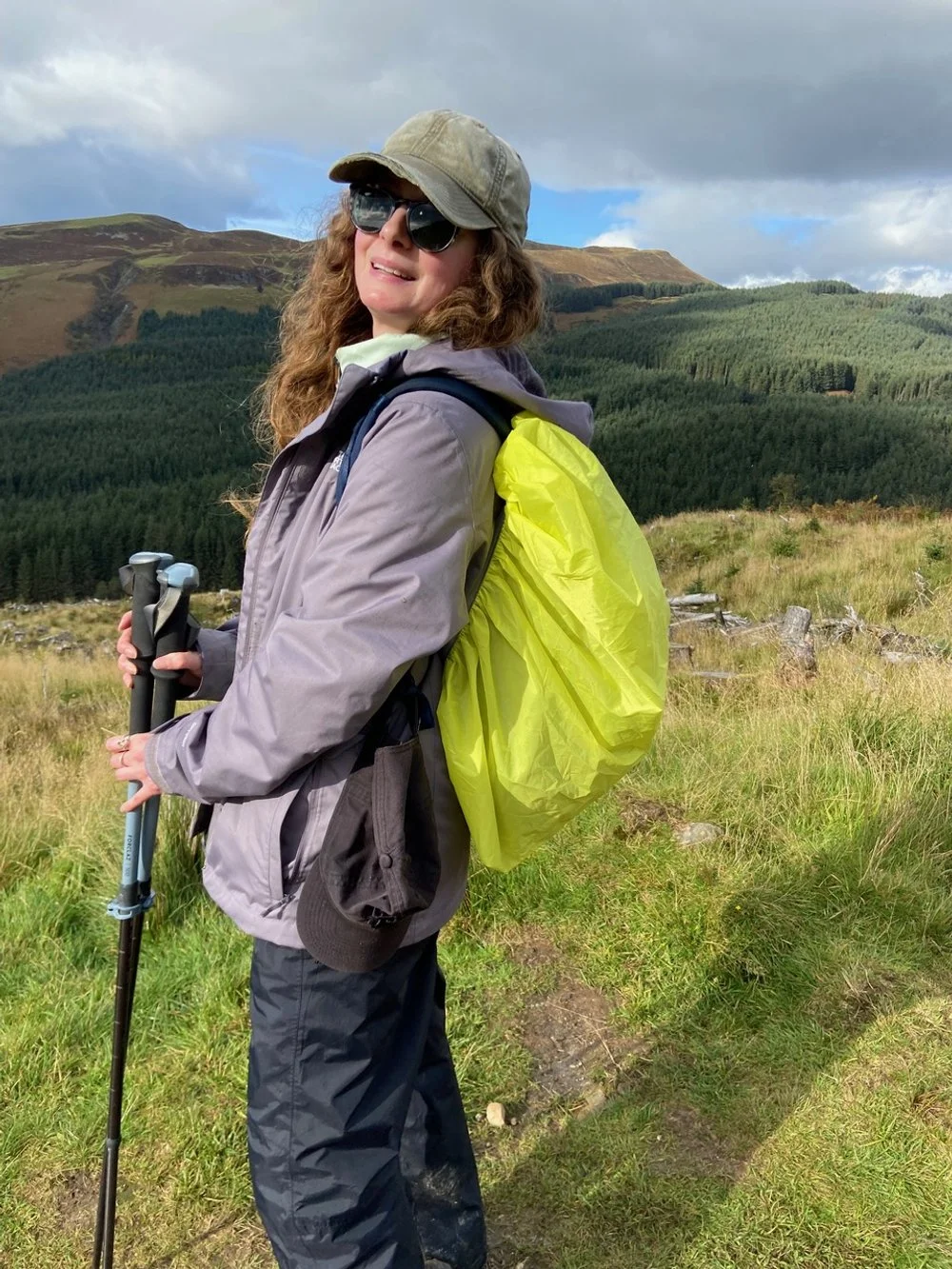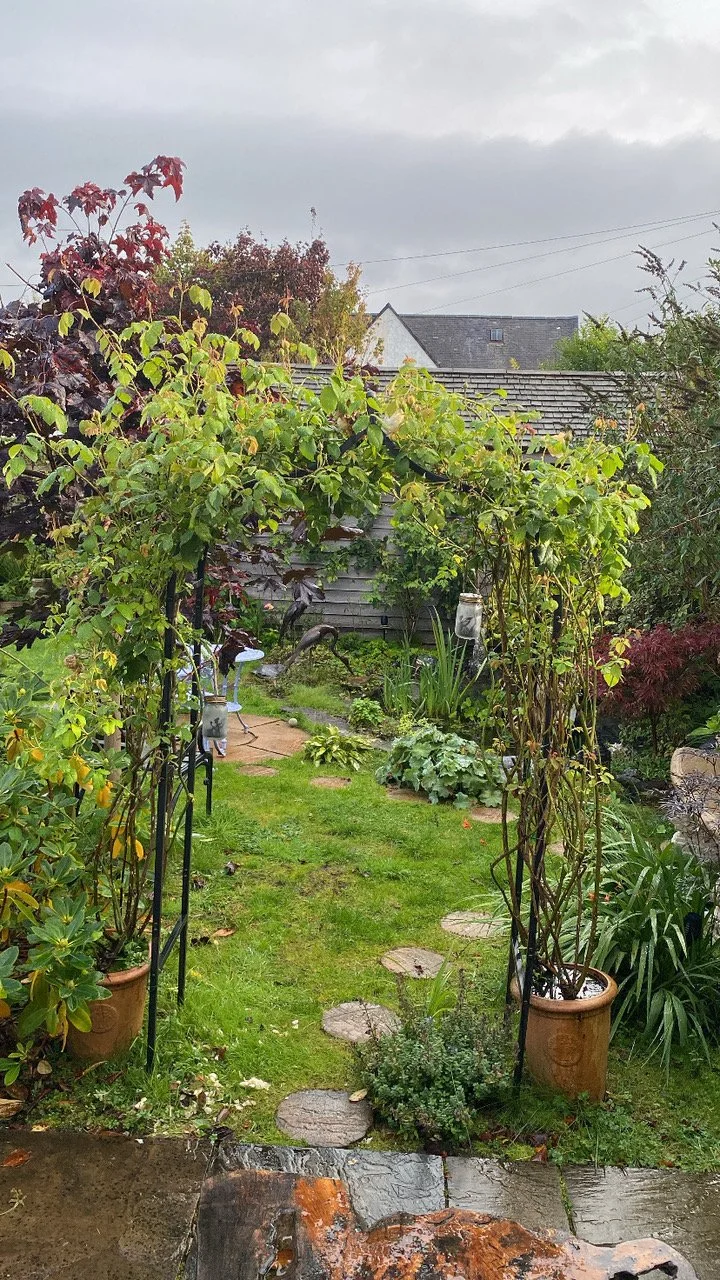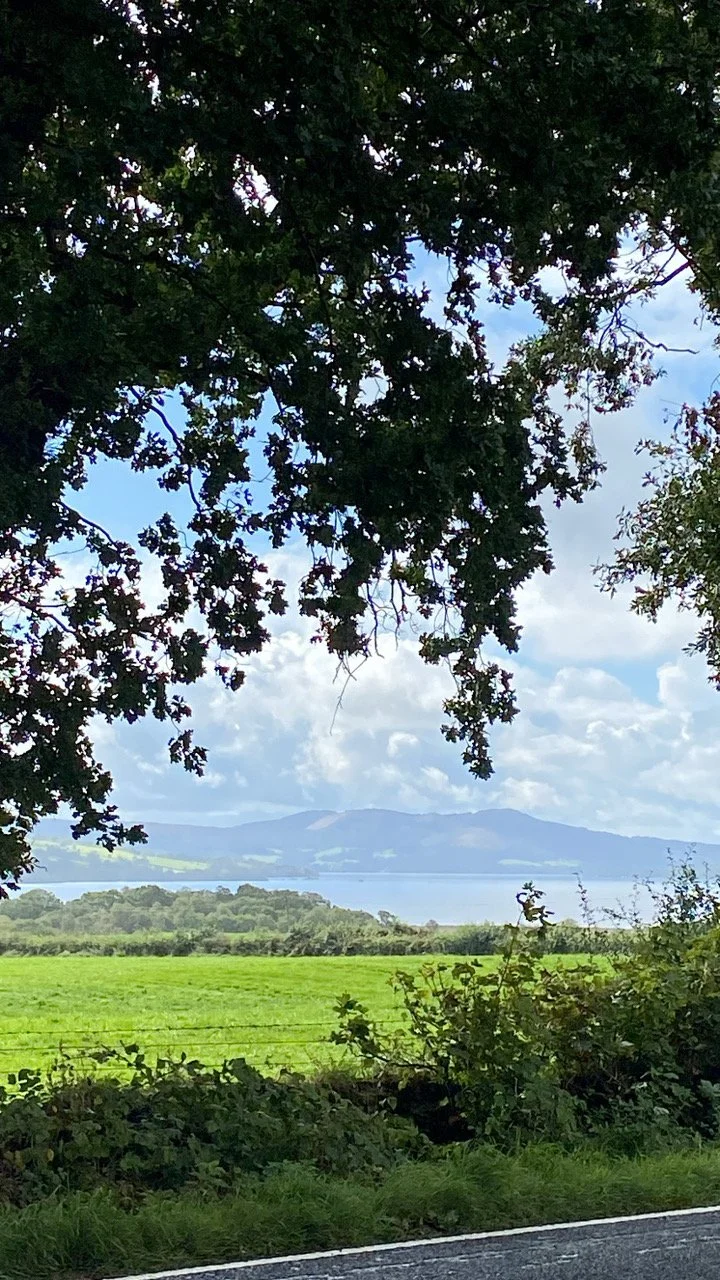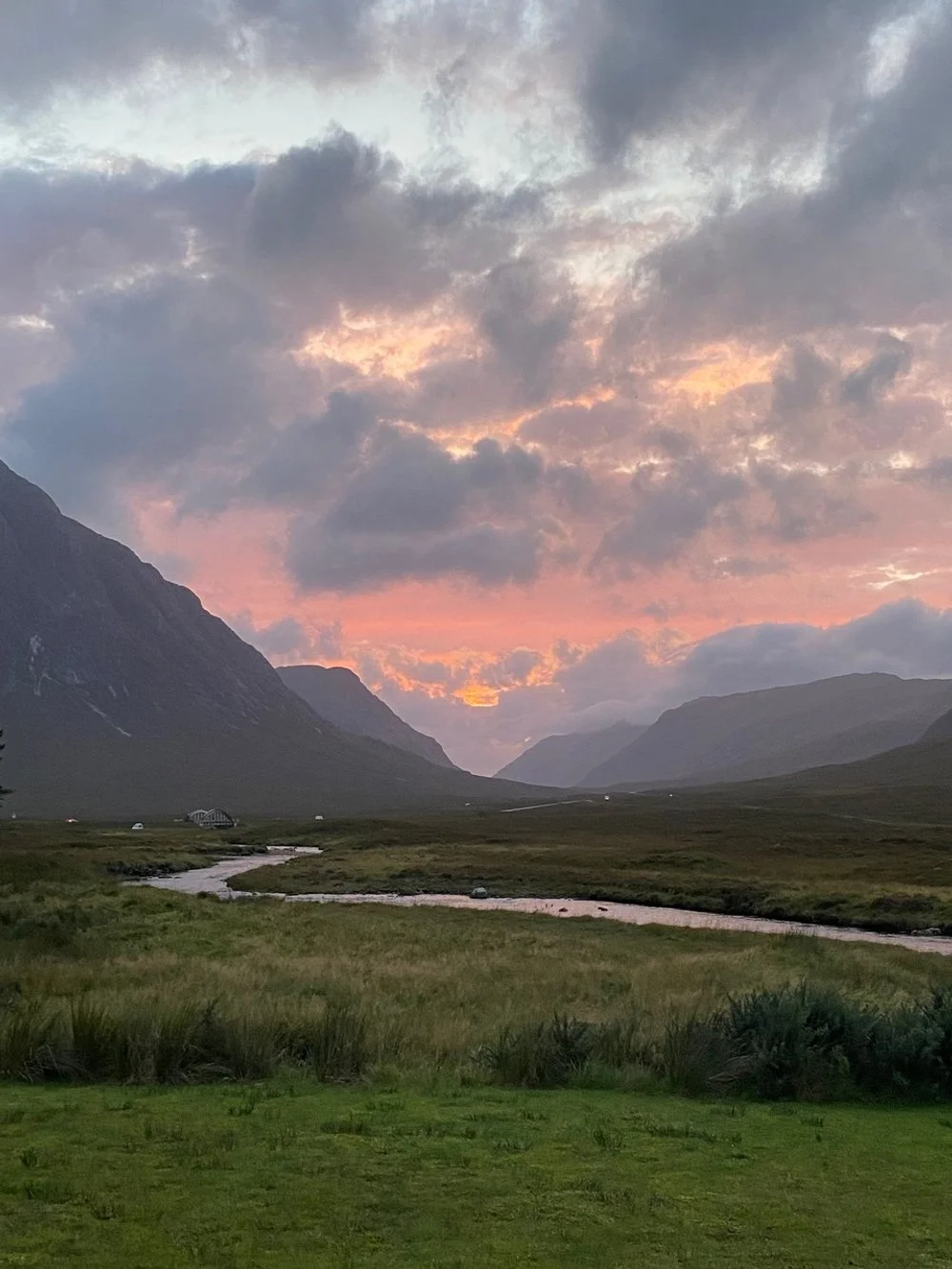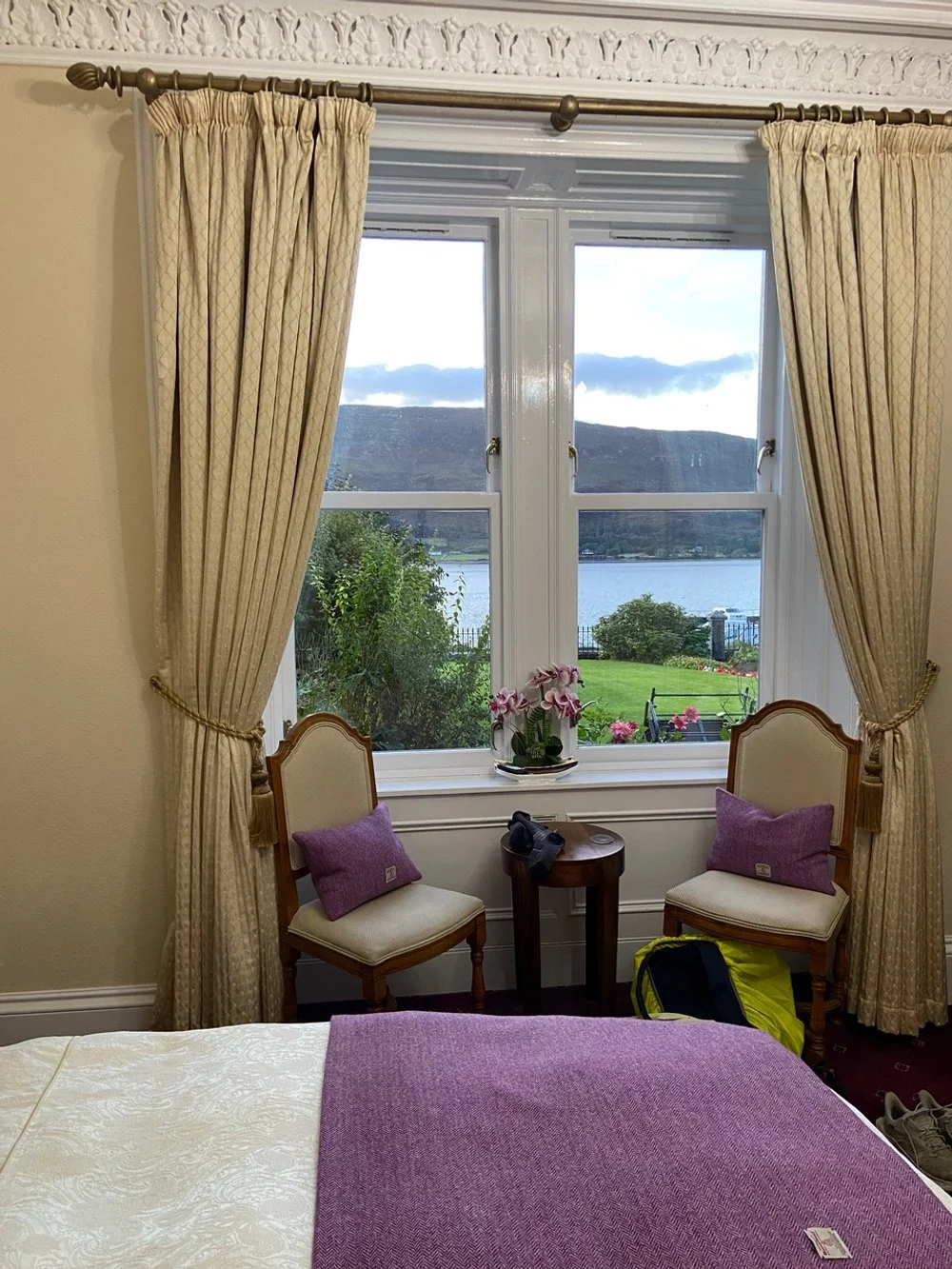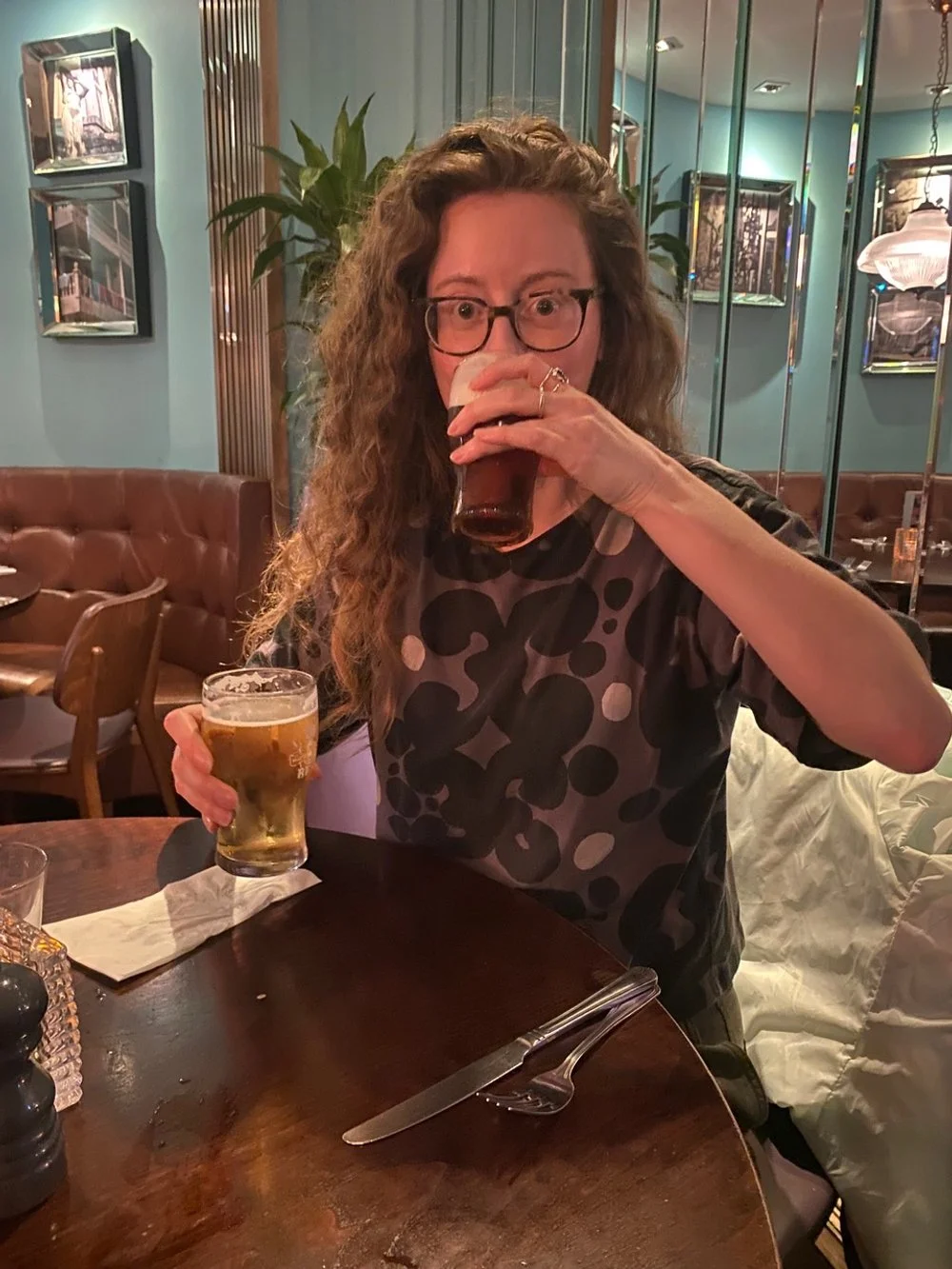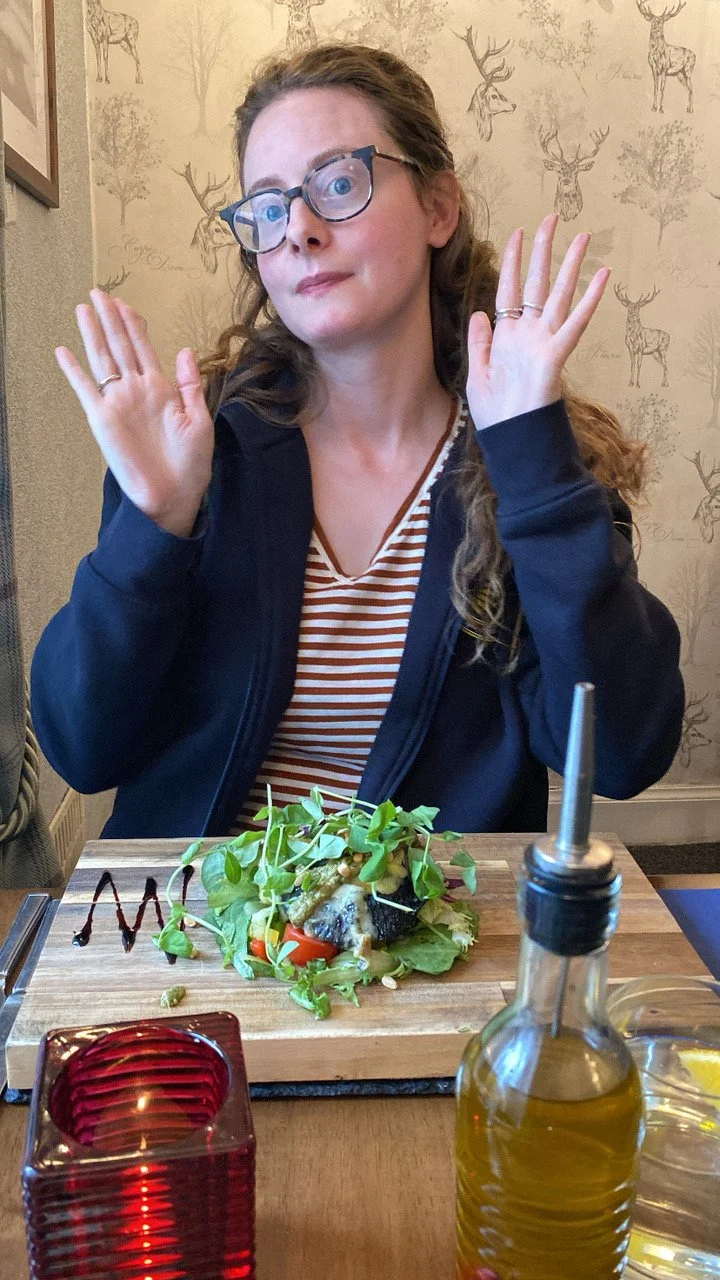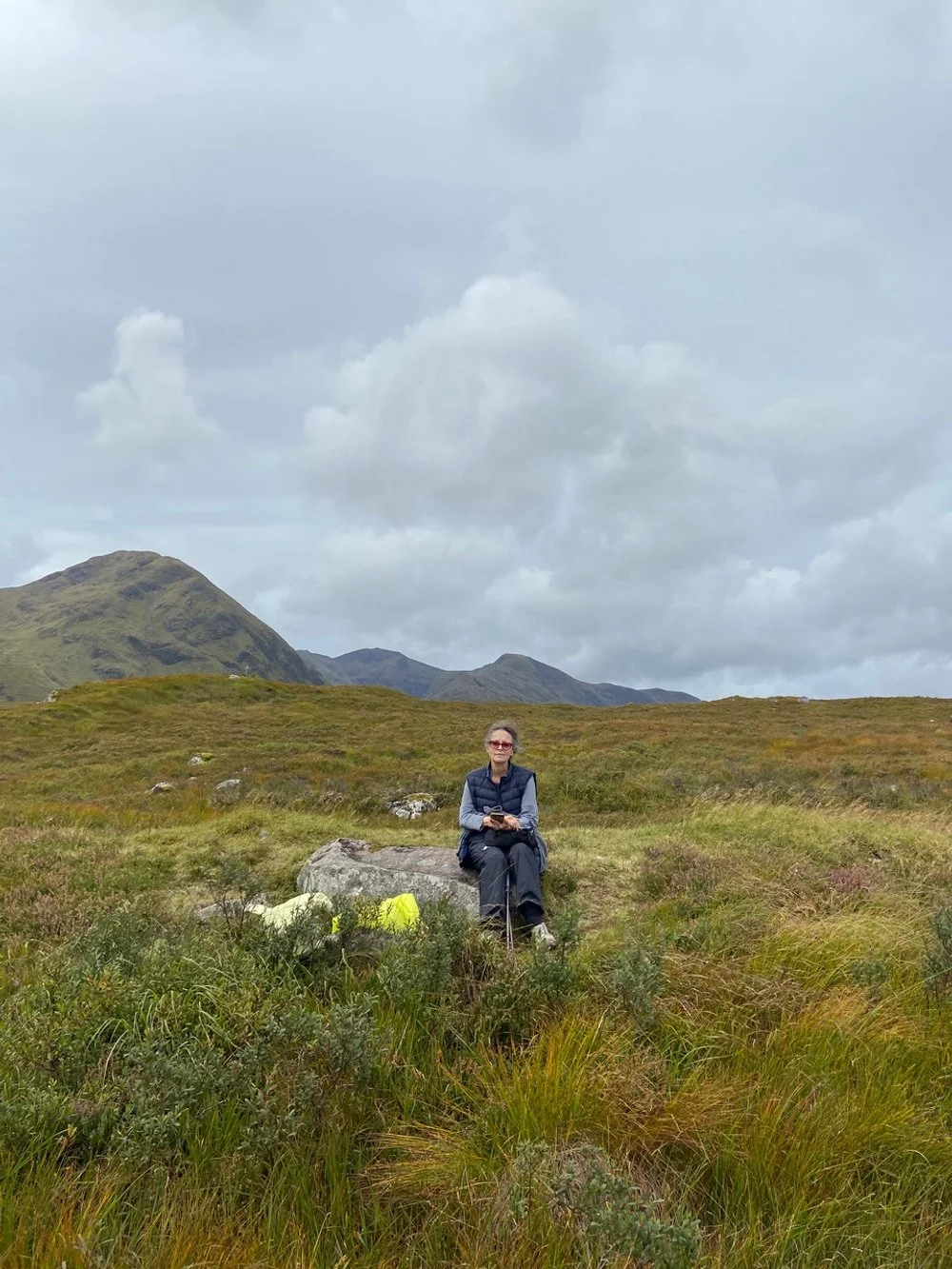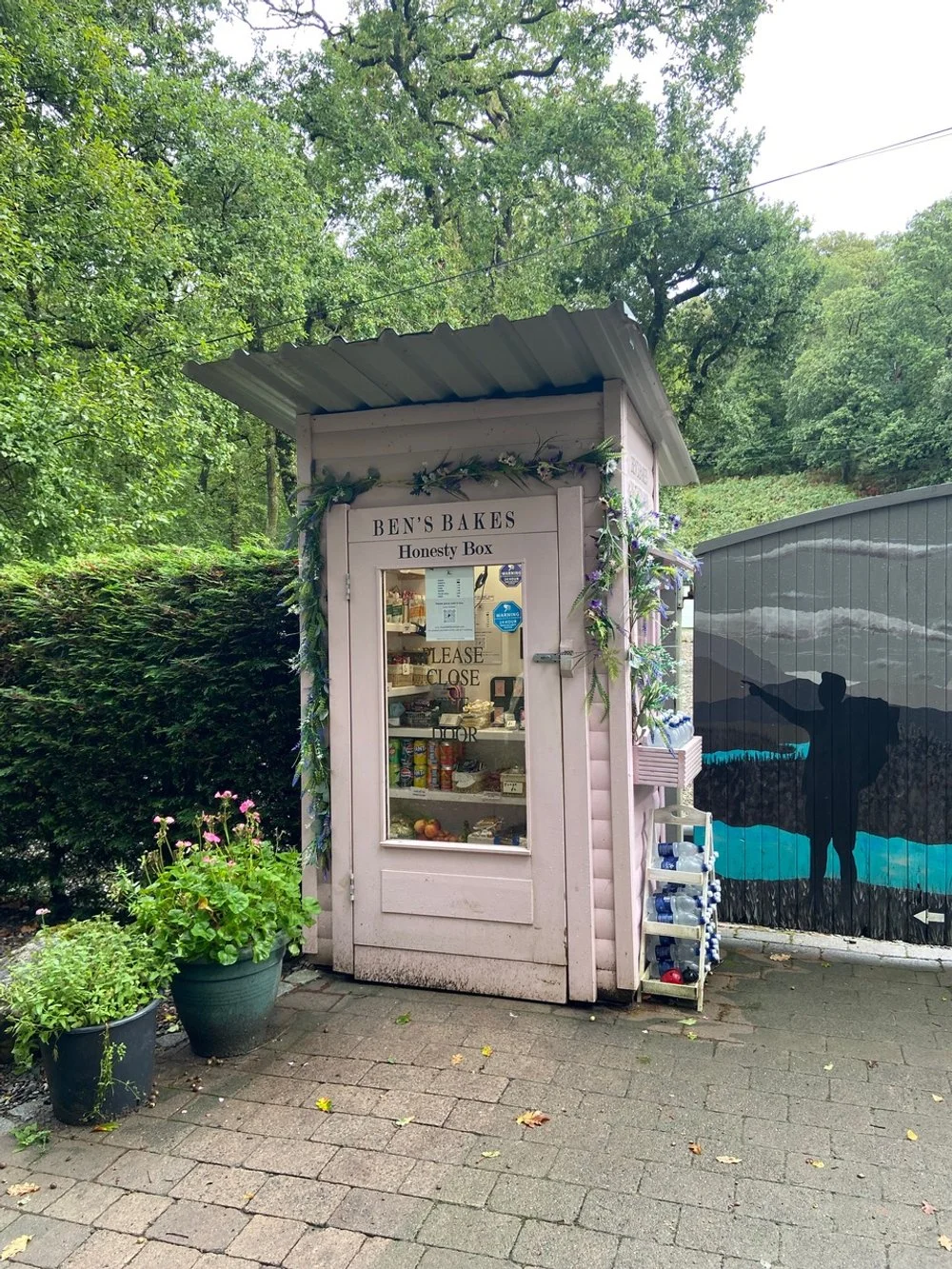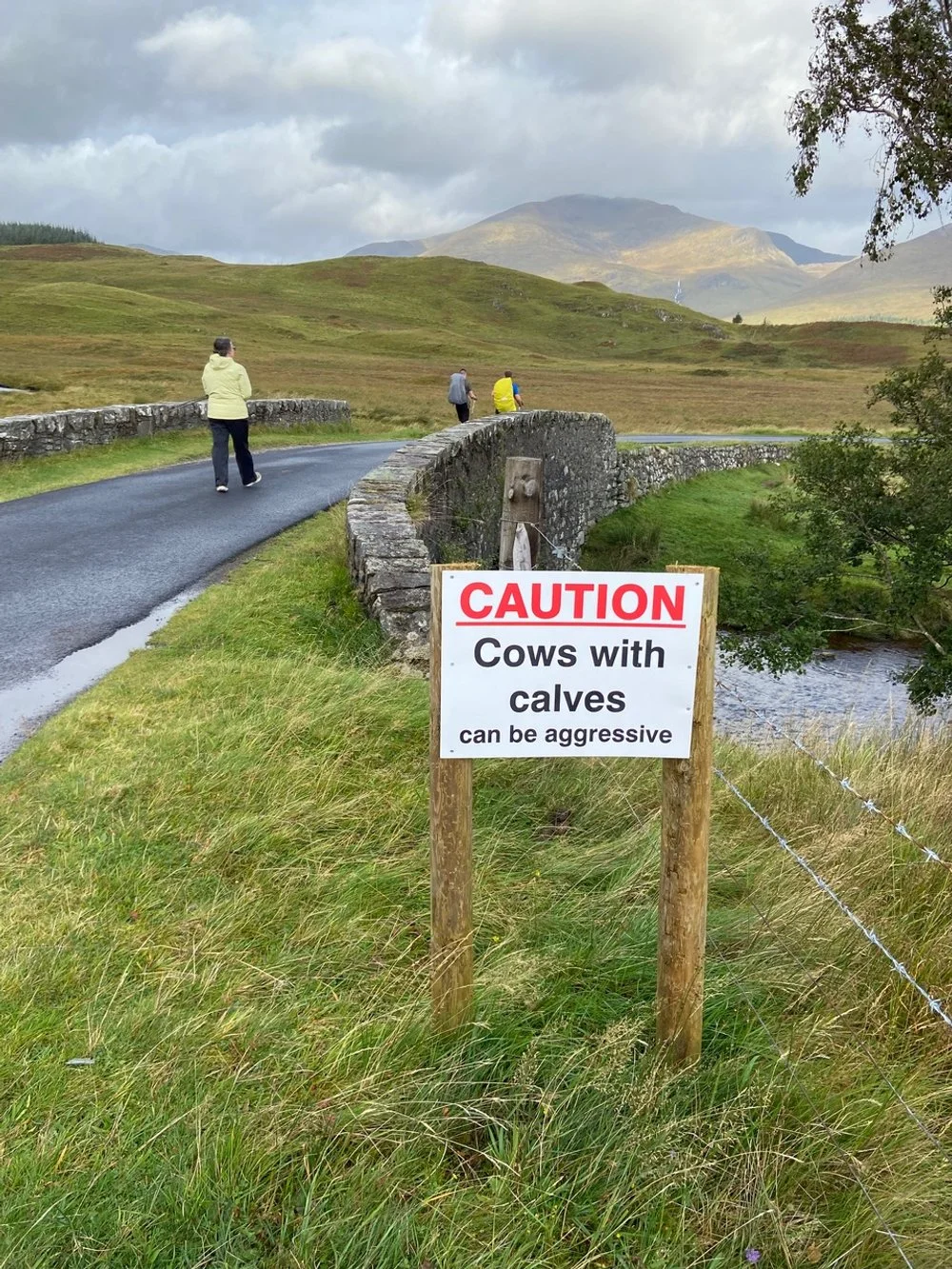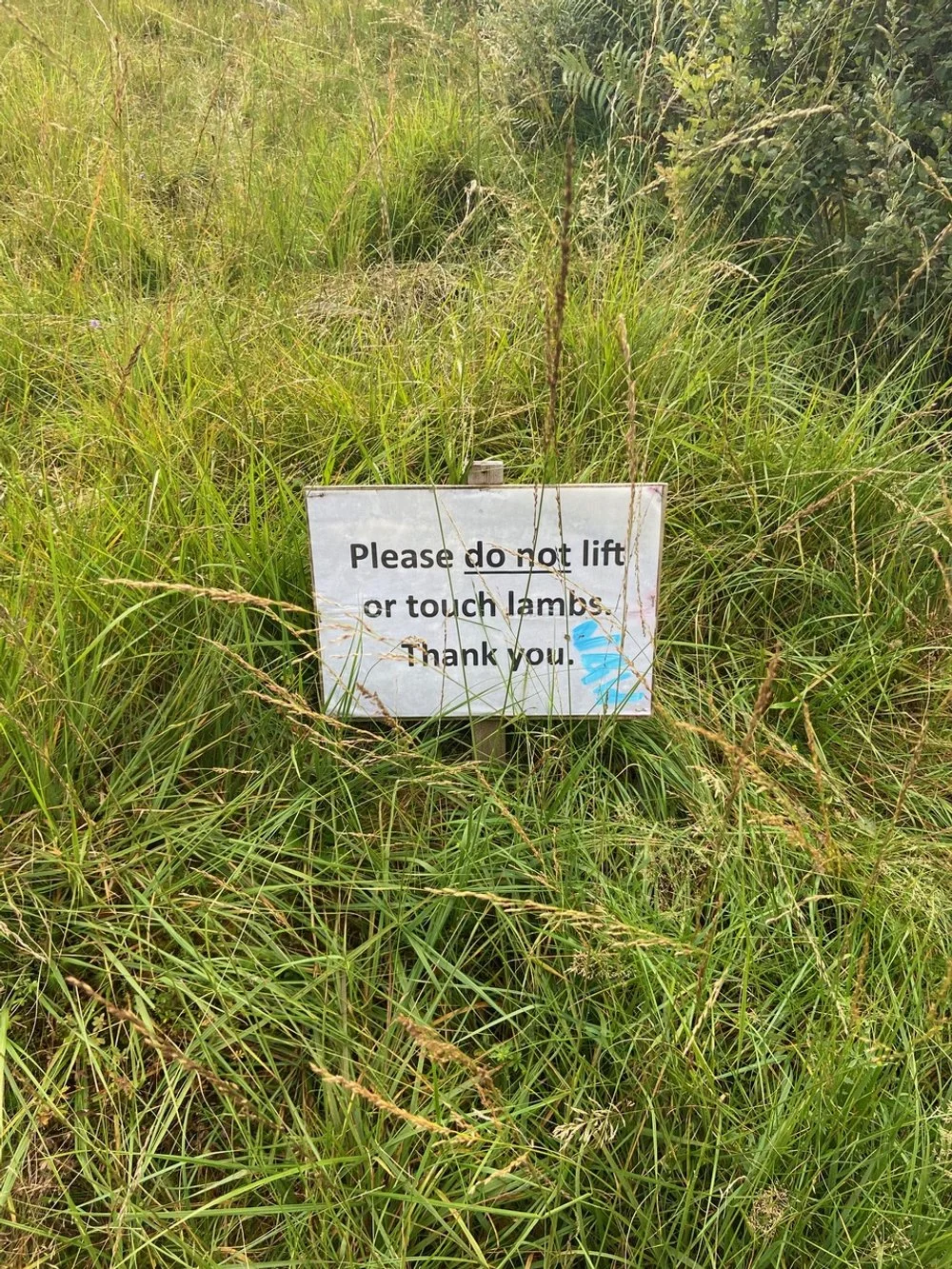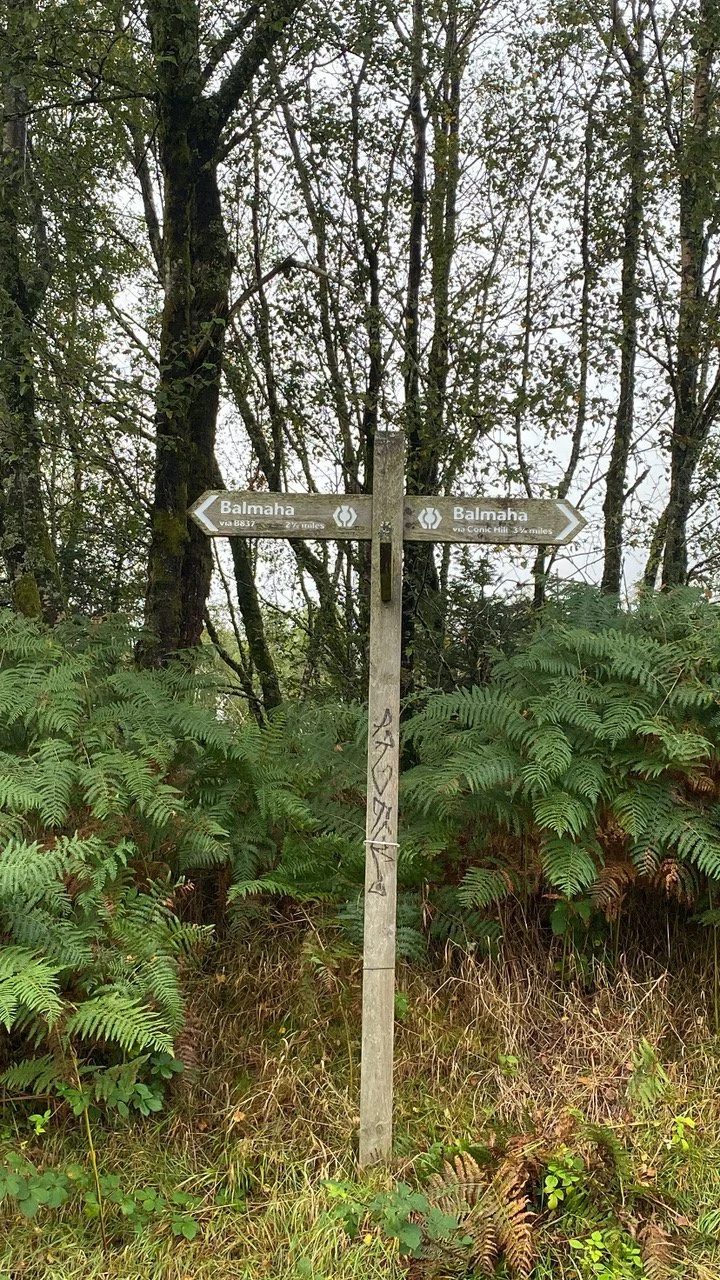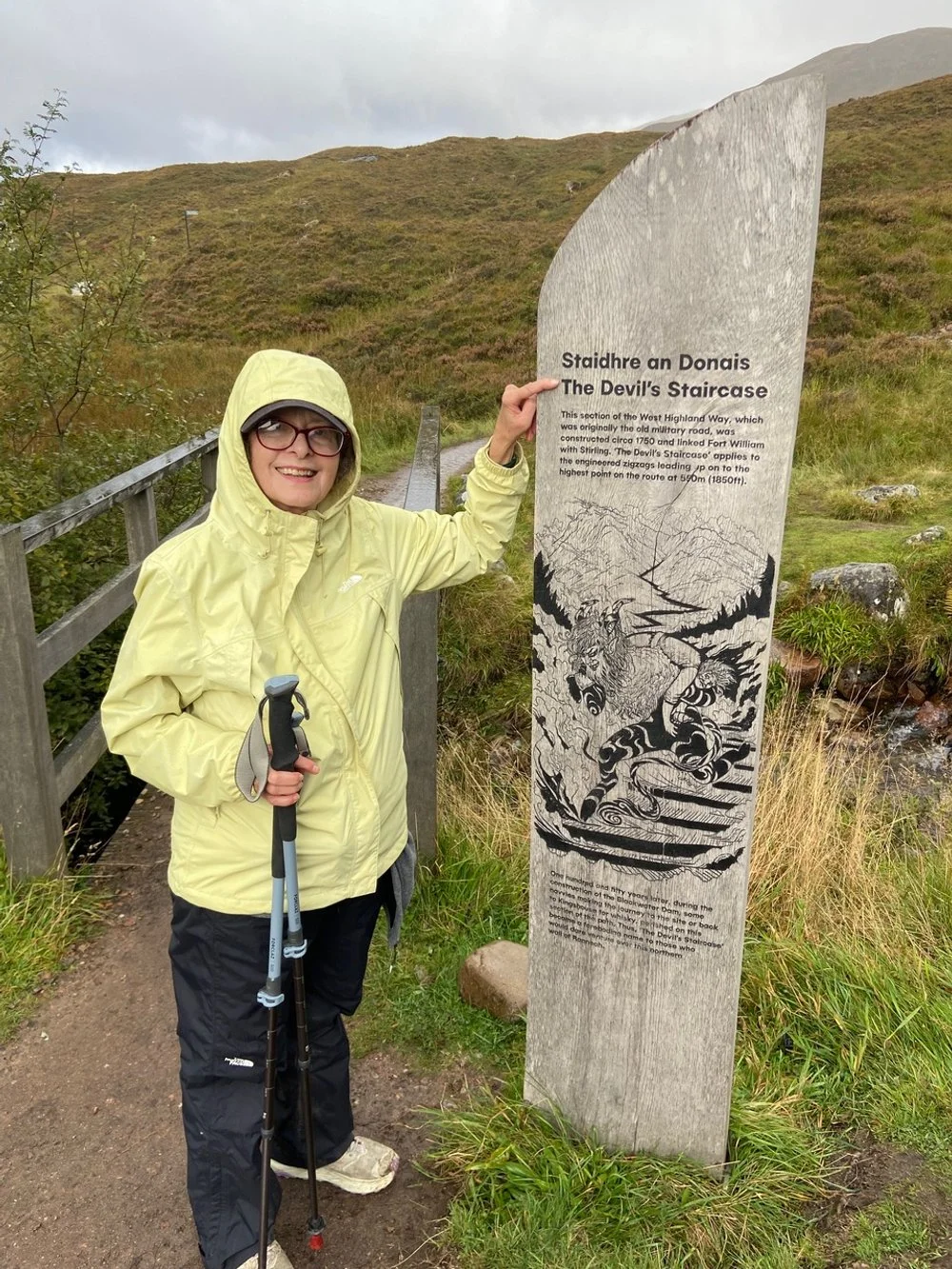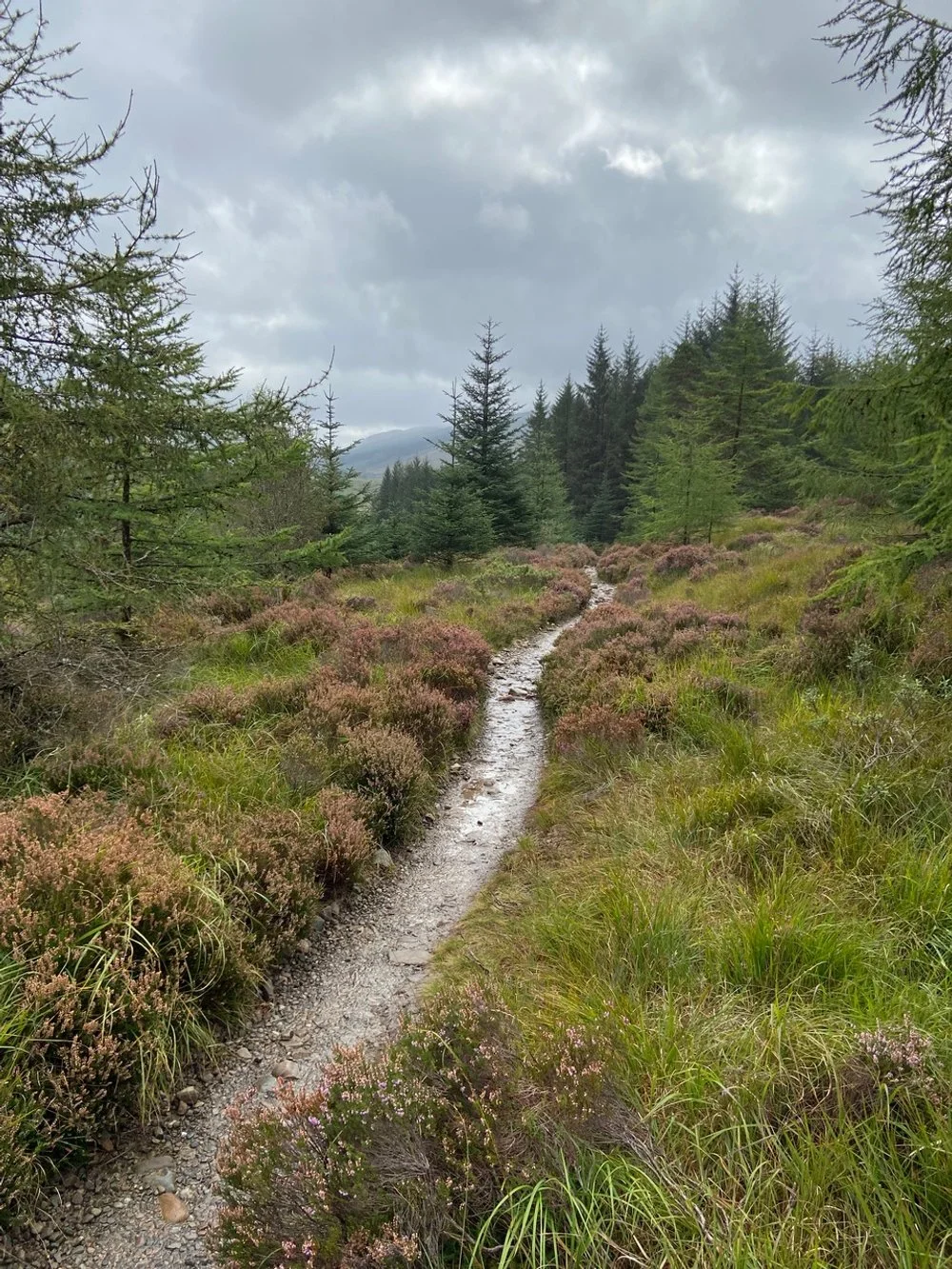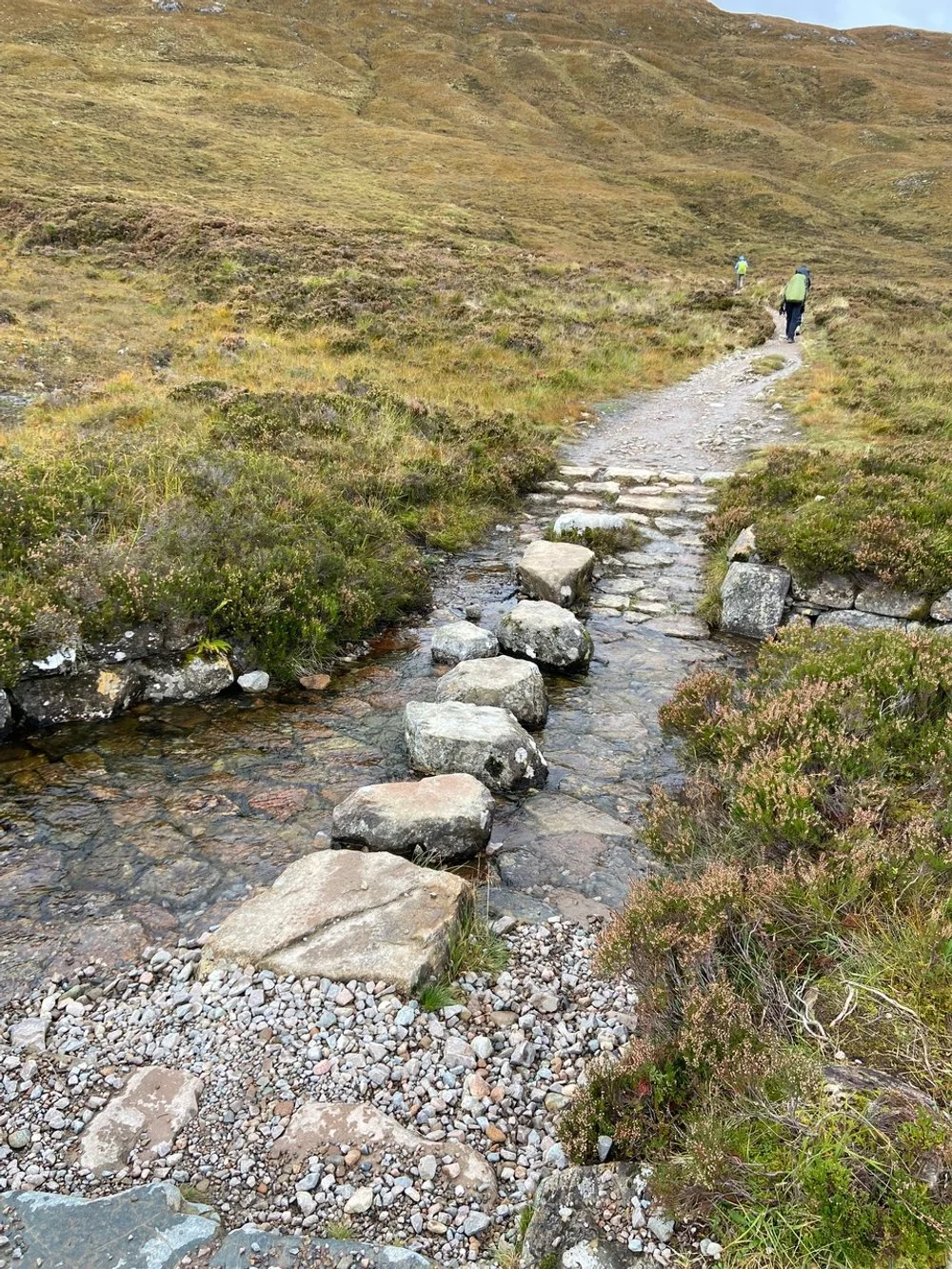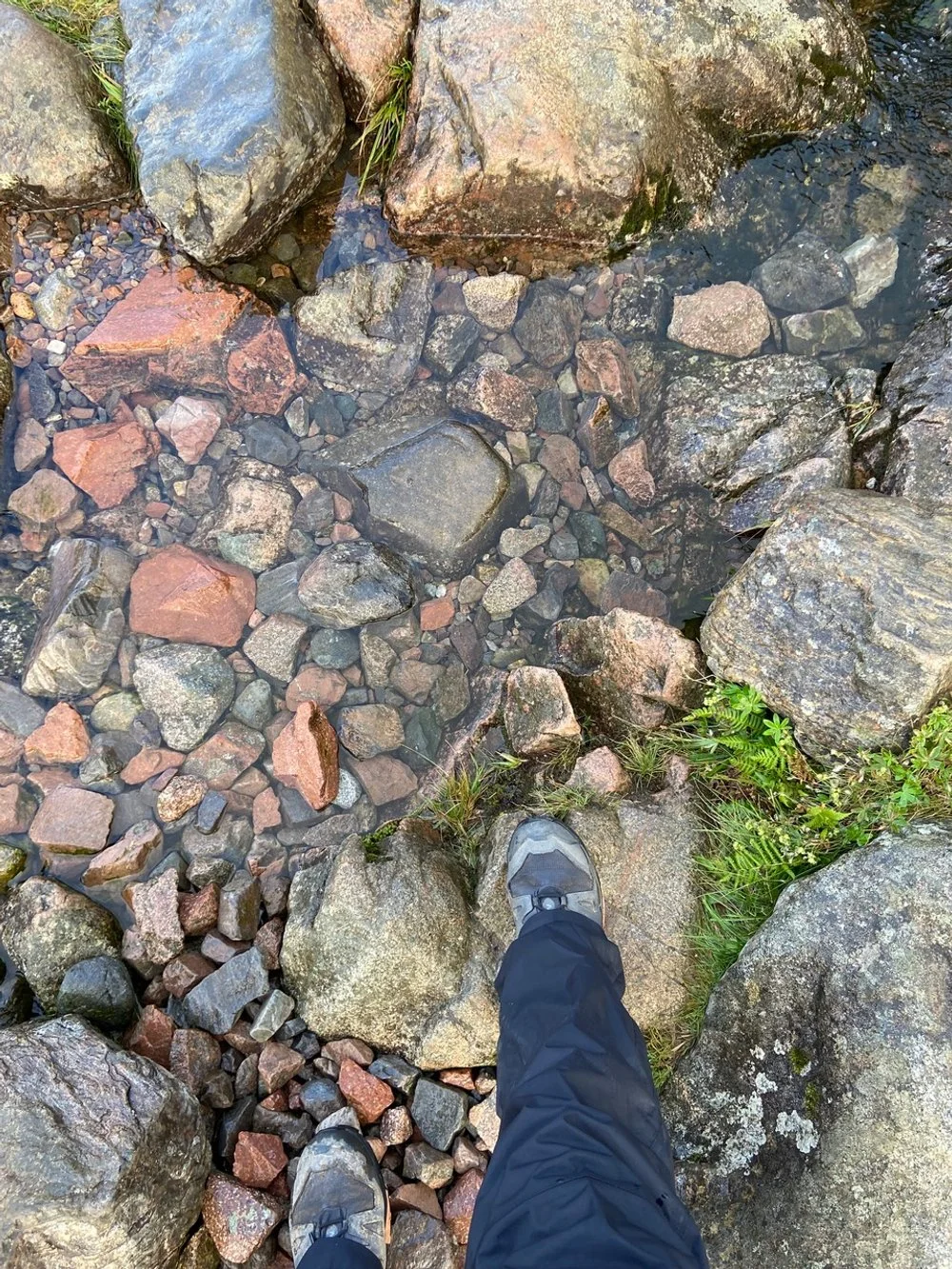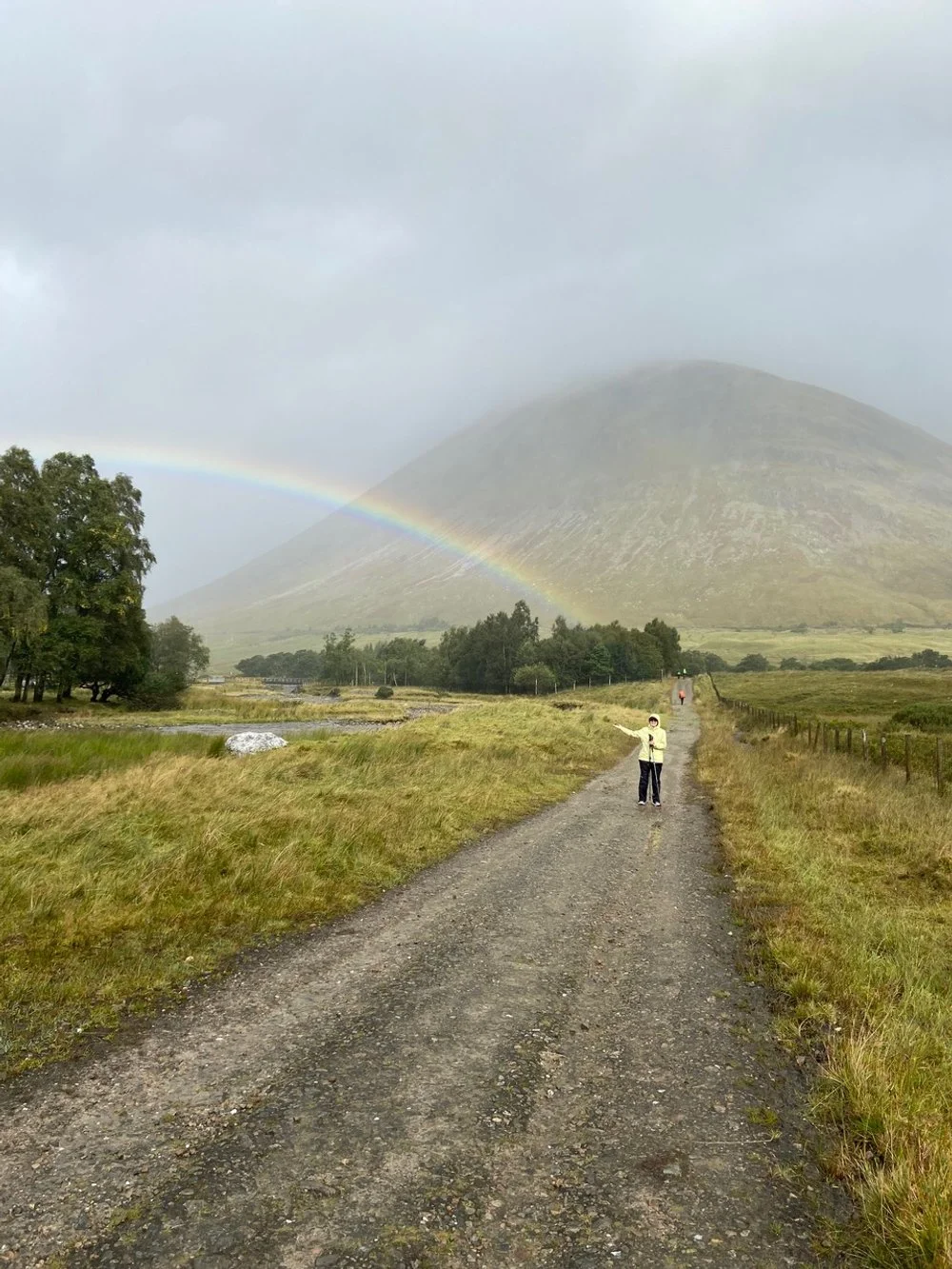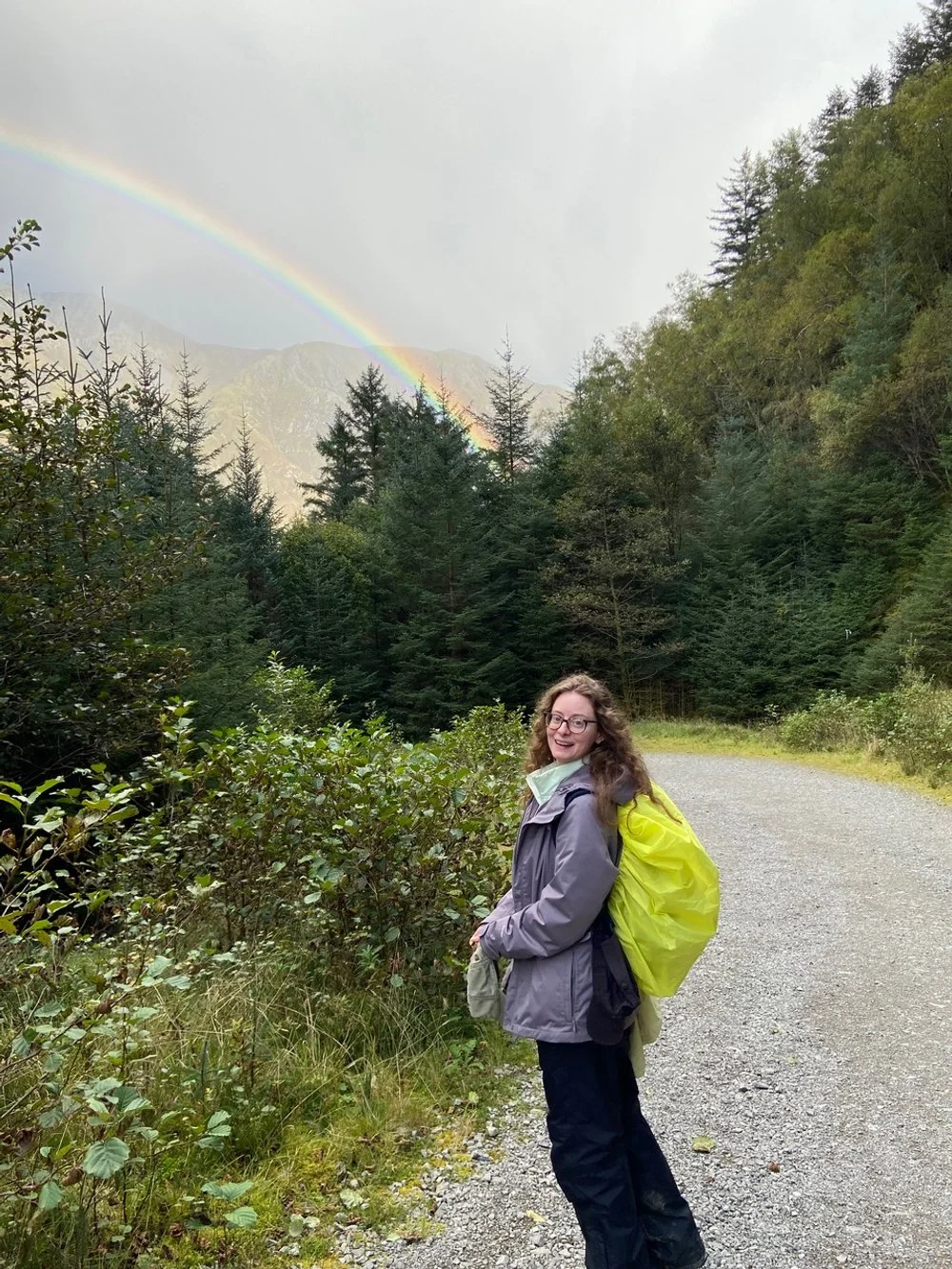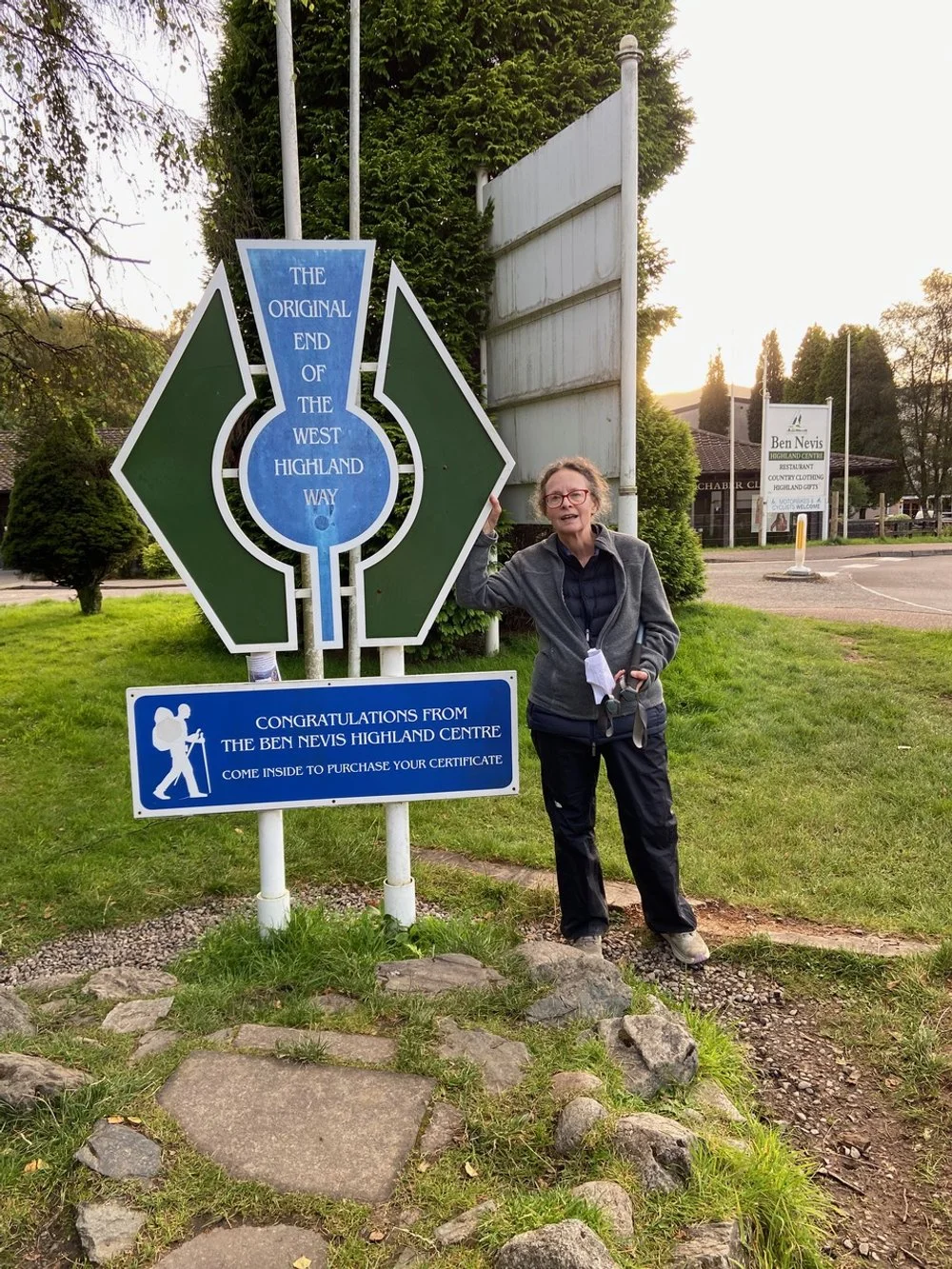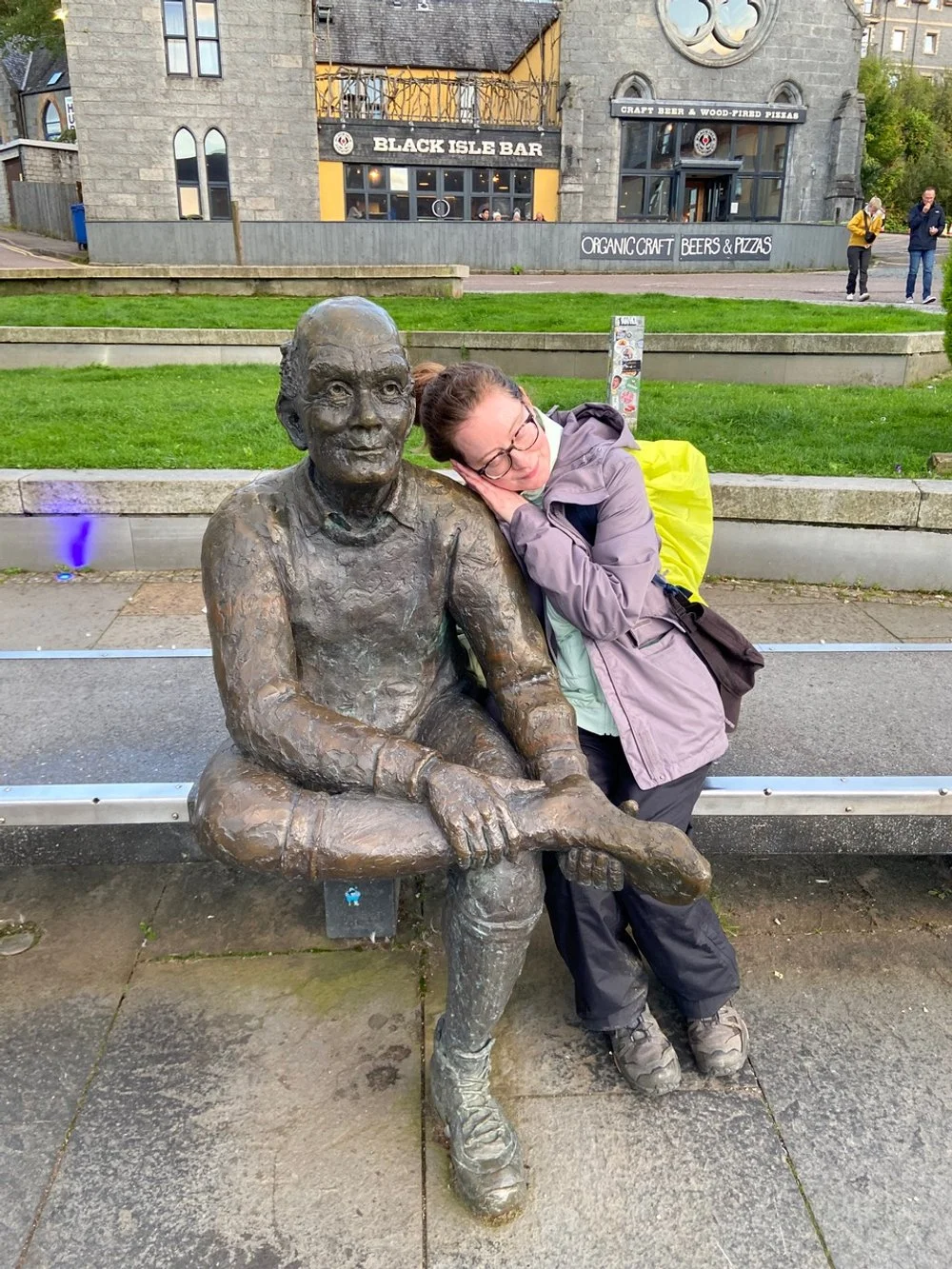I did it My Way
Walking the West Highland Way
Bienvenue and welcome back to Musée Musings your idiosyncratic guide to Paris and art. This week, we’re in Scotland. Walking the West Highland Way. Last year, Ginevra and I walked the last stretch of the Camino de Santiago on the French Way, from Sarria to Santiago de Compostela. It’s a 111 km walk, which is 11 km more than is required to obtain a certificate of completion. We set out from Sarria with the pilgrim passports we received, for a small donation, from the Northern California chapter of American Pilgrims on the Camino. Perennial student that I am, a certificate of completion was what I wanted and a passport was what I needed to get it. We had to have the passport stamped at least twice every day, when we started out and when we arrived at our daily destination. To prove that we had walked the Camino, although I’m not sure how a passport prevented anyone from traveling from place to place by bus or taxi. Getting our passports stamped became a wee bit of an obsession with me and I knew that I didn’t want to do that again this year. You can buy a passport to prove that you walked the West Highland Way, but I didn’t find out anything about it. That was so last year! Also, when we walked the Camino, the destination had been more important (to me) than the journey (not very Zen, I know) and this time I wanted to be in the moment, to concentrate on the Journey.
I had wanted to walk the Camino for years and last year the stars aligned when I convinced Ginevra that she wanted to walk the Camino, too. Even though I had initially suggested that we could celebrate her October birthday at a spa. At first, we considered booking our own hotels and organizing our own luggage transfers. Then common sense took over and we found professionals do it. Everything worked out fine. The walks were mostly comfortable although not always scenic, the hotels were mostly modest but always clean. Breakfasts at the hotels were sometimes strange but there was always something we could eat and lunches were whatever we happened to find along our walk. Dinners were a highlight of the trip. Each evening we ate at a restaurant suggested by the people who organized our trip. They were uniformly excellent.
When I returned to San Francisco for my annual visit in November, Ginevra and I began thinking about our adventure for this year. I didn’t need to go on any more walks. Ginevra alas, was just getting started. And since I had talked her into the Camino, I let her talk me into finding another walk for this year. We flirted with a variety of destinations until my friend Melinda suggested the West Highland Way, in Scotland, a place neither Ginevra nor I had ever visited. I was all for walking half of it, Ginevra insisted that we walk all of it, all 154 km of it. Once again, we flirted with the idea of organizing our own hotels and luggage transfers because even though it may be impossible for an American to understand a Scotsman’s spoken English, the written language is mostly the same. But common sense prevailed and we found a company to make the hotel reservations and organize luggage transfers. We decided to walk the 154 km in 9 days with a mix of 20 km and 15 km walking days. Based upon a suggestion from the travel company, we booked an extra night in Tyndrum, the midpoint of our walk, to visit nearby Oban, a village about which Rick Steves waxes eloquent in his guidebook.
We initially wanted to walk in July or August, when it’s warmer and dryer in Scotland. But that’s also when the dreaded midges, those miniature mosquitos that travel in gangs and bite indiscriminately, are out in force. The only way to avoid them in the summer is to stay inside (not an option when walking) or cover yourself from head to toe when outdoors (which didn’t sound too appealing).
We settled on the beginning of September, hoping that the midges would have disappeared by then. We contacted the Scottish travel agent who booked our accommodations in early January and learned that hotels on the Way were already fully booked for early September! Turns out, there aren’t many places to stay along the Way. If we wanted to stay in the villages we walked to, which we did, the earliest we could begin was September 12. During our walk, we met people whose trips were a hodgepodge of walking and being transported back and forth from out of the Way accommodations.
With our time fixed, it was time to get outfitted. Last year, I comfortably walked the Camino wearing a pair of Hokas. This year, before I left San Francisco in January, Ginevra and I went to a running shoes store and described the walk we would be doing. The sales person suggested a different Hokas style which I happily bought. Last year, we hadn’t been prepared for the rain in Spain, this year, Nicolas’ Christmas presents to us was foul weather gear - North Face rain pants and rain jackets.
As winter turned to spring, we organized our transportation to Scotland - Eurostar from Paris to London, local train from London to Glasgow, just 30 minutes from Milngavie [pronounced Mulguy] the starting point of our walk. And we began looking for places to stay and things to do at the end of our trip - cultural stays in Glasgow and Edinburgh.
My spring and summer were filled with travel - Cabourg in February, Oxford and London in April, Berlin in June and Normandy in August. Added to that was Nicolas’ unexpected 3 months stay with me. By the time September arrived, I was a little worn out. Ginevra was raring to go.
Just before she left San Francisco, Ginevra purchased a pair of waterproof walking boots from Salomon, the shoe brand that Emily in Paris wears when she is actually walking around Paris. She encouraged me to do the same. Which I did, at their flagship boutique on the Champs Elysees.
Everything was in place for our trip, except it wasn’t. The closer we got to our date of departure, the more it appeared as if the travel arrangements we had made months earlier, were about to unravel. A big strike in France was scheduled for our day of departure. The metros would most likely not be running, the Eurostar might not be running, either. If the metros weren’t running but the Eurostar was, we could take a taxi from my place to the Gare du Nord. Except that the talk on the news was of protesters’ intentions to block street traffic in Paris. And even though we were going on a walking holiday, a 45 minute walk to the station, dragging our luggage, wasn’t all that appealing. And if those concerns weren’t enough, we learned that if we did get from my apartment to the Gare du Nord and from the Gare du Nord to San Pancras, the tube was on strike in London, too. Thank goodness that part was quickly resolved, I googled the distance from San Pancras to Euston Station and learned that it was just a 10 minute walk.
Our Eurostar from Gare du Nord to London was scheduled to depart at 10 a.m. Passengers were advised to arrive 90 minutes early. I looked at the metro schedule at 7:00 a.m. and discovered a new impediment to a successful start of our journey. All metros were running, but there was a technical problem on the metro we needed to take! Which they thought would be repaired by 8:00 a.m. At 8:15, we left my apartment for the 5 stations between my stop and the Gare du Nord. A train arrived almost immediately, it was almost empty and the lights, which indicate future stops, were only illuminated through Republique. Which meant, if you take signage seriously, that the metro would stop at Republique and we would have to find ground transportation to the train station. The announcement we heard as we boarded the metro was exactly that. But when we got to Republique, the train discharged passengers, picked up others and kept going, all the way to Gare du Nord. We went through ticket check, security check and border control. Thirty minutes after we left my apartment and 15 minutes before 9:00 a.m. I asked a woman who might have been in charge, if we could board the 9:00 a.m. train. She said that normally it would cost 50€ each to change trains but that this one time, we could do it for free. We boarded the train for London a few minutes before it departed. Which was a good thing because by 10:00 a.m. protesters had shut down the Gare du Nord.
It’s a fast and easy trip from Paris to London and in 2 1/2 hours, we were at St. Pancras, and with the time change, only 1 1/2 hours after we left. Thank goodness Euston Station is a short walk from St Pancras because the line of people waiting for a taxi wound around the entire station. And because it was raining buckets.
With all my preplanning amid worries about delays, the train I had booked for our onward journey to Glasgow was leaving in 4 hours - not enough time to do anything, way too much time to do nothing. Especially at Euston station which isn’t much of a station in the best of times. The day we were there was not the best of times. Alas, this time, our change of time wasn’t free, it was 50£ each. It was a long train ride (4 1/2 hours) and a bumpy one. We were not in the best of shape when we finally arrived in Glasgow. Thank goodness I had the foresight to book a night there to recuperate from our train trips. While Ginevra and I are good walkers, we are not good at any form of vehicular transportation, not metros or buses or trains or planes. They all make us sick, sometimes very sick.
The train ride from Glasgow to Milngavie (pronounced Mulguy) the next afternoon took less than 30 minutes. I had begun wearing my new Salomon boots in Paris and continued wearing them in Glasgow. They felt good, offering support for my ankles which my shorter Hokas did not. The hotel in Milngavie was comfortable and clean. The dinner at the restaurant we were advised to book had its weekly Indian Dinner menu. It was a harbinger of meals to come. Indian or Italian are the default options in Scotland - if you want a break from haggis and fish and chips.
Breakfast that first morning was marginally better than most of the breakfasts we encountered along the Way in that we could order eggs the way we wanted them - poached, please. Most breakfasts were steamed scrambled eggs, rubbery bacon, gristly sausages, grilled raw tomato halves, baked beans and potato scones which were actually unbrowned hash browns. The bread, mostly white, reminded me of the Wonderbread of my formative years. You know, the kind of bread that if you remove the crust, you can roll into a tight ball of gluten and fling at someone, just like my brothers used to do.
As my French friend said when I told him we were going to Scotland, nobody goes there for the food. How true! There is no place to get lunch along the Way. Many hotels offer to prepare sack lunches, but based upon the breakfasts, neither Ginevra nor I was keen to try that. The first day, we brought two sausages and two slices of bread from breakfast with us. But the bread was so gummy that I choked on my first bite. I should have abandoned the bread and just eaten the sausage. From then on, we mostly stuck to the dates and figs and apricots; walnuts and cashews and almonds that we brought with us from Paris, occasionally augmented with slices of cheese and ham purloined from breakfast. In addition to no places to buy lunch along the Way, there was no place to eat lunch either, except on a rock or the grass, both options, mostly wet. We quickly understood why our travel agent listed sit mats on her list of essentials. For a girl like me, who needs constant reassurance, the West Highland Way was remarkably unmarked.
The hotels? Most of them were okay, some of them were fine, like the Oaktree Inn in Balmaha which is a mix of hotel rooms and cottages along a lake and is the only game in town. Beinglas Farm in Inverarnan was a mix of tents to rent and places for people to pitch their own tents as well as spacious ensuite rooms like the one we stayed in. It was fun to have dinner at the lively bar where we met people who were all doing the Way their way. Kingshouse in Kingshouse was a luxury hotel with wonderful views of the Way. One old hotel was charming but the layer of grime on every surface suggested that it had never been properly cleaned. At another hotel, the room was okay but the steep stairs and corridor leading to our room reminded us both of Stanley Kubrick’s The Shining (and Ginevra was sure the twins would appear at any moment).. The B & B where we had been booked to stay for two nights smelled of cats and the woman who owned it began chastising us as soon as we arrived. Rather than the two nights we had envisioned - unpacking once and visiting Oban on our day off, we fled that B & B and because of limited availability, stayed one night at one hotel and then dragged our luggage to another for our second night. Instead of visiting Oban, we did our laundry. Our last evening, in Fort William, after walking 28 km rather than 24 km, was at the Fessfern B & B. We had a lovely room with a beautiful view of the water. We were only sorry we had arrived so late and didn’t really have time to enjoy the room or the view properly.
Oh, here’s something else. While it is true that our luggage was waiting for us at each hotel. Unlike the Camino, it was not in the lobby. It was usually in a stand alone hut, called a bothy. Which, according to Wikipedia is “a basic shelter, usually left unlocked and available for anyone to use free of charge…” I think bothies have figured in some of the murder mysteries I have read or seen that take place in rural England. Alas, after fetching our luggage in the bothies, we usually had to drag it upstairs to our rooms because most of the hotels didn’t have elevators. That never happened on the Camino. Ginevra thinks it’s because Spain has to comply with E.U. rules and of course Scotland doesn’t.
As we started out on our first day of walking, we didn’t know what to expect, weather-wise, so we brought our rain pants with us in Ginevra’s backpack. When it started to rain, there really was no place to stop, take off our boots, put on our rain paints, put our boots back on and start walking again. Our walking pants got wet, but with weather as changeable as it is on the West Highland Way, our pants dried out and got wet again a few more times that first day, a 20 km (12 1/2 miles) walk. From then on, we wore our rain pants over our walking pants every day. On cold days, and the days were mostly cold, the extra layer felt good. Each day, we wore long sleeved shirts and fleeces and rain jackets. Which we kept taking off and putting back on, as we heated up from exertion or cooled off at higher elevations.
Northface clothing for the win.
As I walked that first day, I gradually became aware that the outside of my right ankle hurt. The discomfort only gradually dawned on me, maybe because I have never experienced pain in that spot before. I thought maybe the pain was from my ankle rubbing against the boot. So I stuffed a glove into that space to keep my ankle from making contact with the boot. That didn’t help. Finally I had to tell Ginevra. Valiantly, she offered to swap shoes, which we did. It helped, marginally, but the damage was already done. And Ginevra was beginning to feel pain in the same exact place on her ankle.
I hobbled to our first night’s lodging. It was a gorgeous B & B in Drymen, called Angel Inn, run by a lovely woman whose maximalist taste in decorating we enjoyed very much. And her breakfast was our favorite. Plain yogurt and fresh berries and really nice bread. We mostly picked at most of breakfasts we encountered along the Way, but there were some, like this one and the hotel with real porridge, that we happily ate.
Thank goodness I brought along the Hokas I bought in San Francisco. They weren’t rainproof, but they were a dream to walk in. I carried my Salomon hiking boots in my suitcase for the rest of the trip, I didn’t attempt to wear them again. A few days after we got back from Scotland, I brought them to the Salomon boutique on the Champs Elysees and explained what had happened. They took them to send to their lab to see what went wrong and gave me a store credit. My ankle still hurts.
And what about the walks I hear you asking. Well, there were lots of steep climbs and lots of steep descents, mostly on wet, slippery stones. There was lots of jumping from stone to stone over rapidly moving streams. Occasionally, a dirt path would be an option but of course dirt plus rain equals mud and that’s what my un-waterproofed Hokas sunk into time and time again. The first time we got to a rapidly moving stream, I froze. Luckily, a group of about 15 experienced walkers from London appeared at that moment. When they saw my hesitation, they took me in hand and with their strong hands and sure feet, they helped me ford the stream. From then on, emboldened, it was Ginevra’s delicate model’s hands that held mine as we moved across one fast flowing stream after another. On the next to last day there was a section called Devil’s Staircase. The path zigzagged up, like so many steep streets in San Francisco do. The difficulty wasn’t repelling up a mountain but doing so on slippery rocks. The payoff at the top of Devil’s Staircase and elsewhere was the majestic views that unfolded on the mountain tops.
Here’s an insight. It is said that if women remembered childbirth, they would only have one child. The same is true (for me) about long walking trips. If I had remembered what walking the Camino was like, I don’t think I would have succumbed to Ginevra’s entreaties to take another walk. Or at least I would have made sure that this walk was shorter, not longer and easier, not harder. In the event, it was both harder and longer.
(Figs 1-19)
Figure 1. The garden view from our room at Angel Cottage, Drymen, Scotland
Figure 2. The view from the Oaktree Inn, Balmaha
Figure 3. The view from Kingshouse restaurant
Figure 4. The view from our room at Fessfern, Fort William
Figure 5. How dinners usually started, two half pints of different beers, one for each hand!!
Figure 6. Pea shoots are the parsley of Scotland, they adorn almost every plate and are mostly left uneaten (except by us)
Figure 7. Lunch break when there was a break in the weather
Figure 8. Ben Bakes Honesty Box on the Way. Baked goods, drinks and fruit in unmanned sheds where people trust you to pay
Figure 9. One of the easier walks made a little dangerous with signs like this
Figure 10. Another cautionary sign threatens the peace of our walk
Figure 11. Most signs were like this, a wee bit unclear
Figure 12. The Devil’s Staircase was very clear
Figure 13. Rain soaked path
Figure 14. Slippery stepping stones
Figure 15. Making my way across
Figure 16. One of the many, wonderful rainbows that greeted us as rain turned to sunshine
Figure 17. A close up of Ginevra and the rainbow!
Figure 18. The original end of the West Highland Way, Fort William, Scotland
Figure 19. The ’new’ end of the West Highland Way (4 km farther) is adorned with a statue of the ’Sore Feet Man’ Fort William, Scotland
Next week, Ginevra’s photos will show you how beautiful our walk was. Then I’ll take over again and tell you about our cultural adventures in Glasgow and Edinburgh. Gros bisous, Dr. B.
Thanks for your Comments about Gardens in Normandie, they are much appreciated
New comments on Gardens are my favorite places
Terrific photos, well done. Martin, London, New York, Perigord
Thank you for another wonderful article combining art, gardens and history! Now, I'll look forward to hearing about your adventures in Scotland next week. Sydney, Portland, OR
OMG what fabulous gardens! Those hydrangeas are the most beautiful I've ever seen. That colour! Wow. I must to learn to enjoy your travels while guarding against the sin of covetousness. Not easy. You manage to fill your life with so much beauty. Sharon, Haifa
What treats! How did Scotland go? Katherine, Oxford, England
I really loved your noodling in the Gardens. It’s amazing how many beautiful gardens you can visit so relatively close to one another. Thanks for sharing. Deedee, Baltimore
